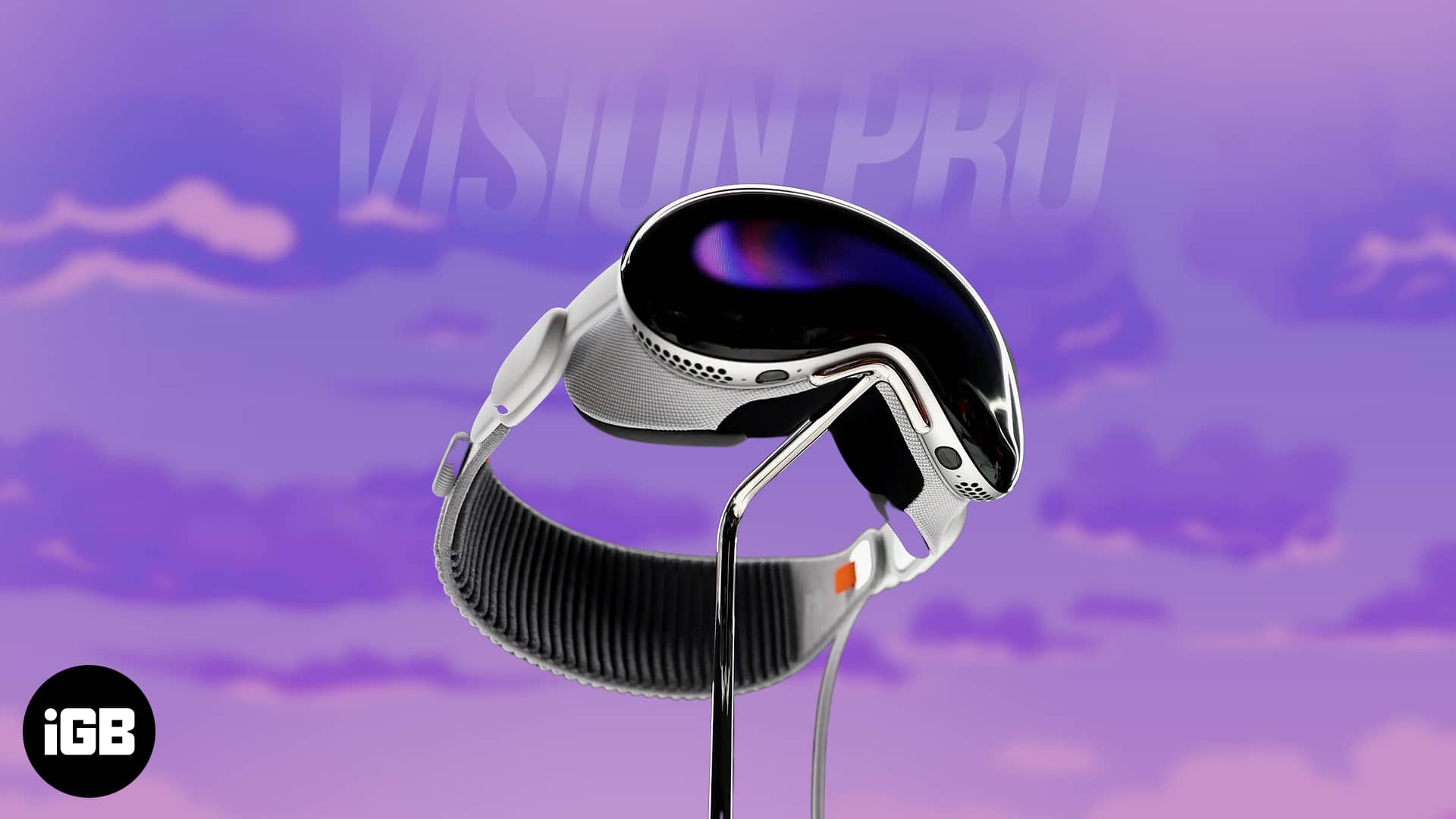Apple has finally unveiled the long-awaited VR headset and it will be available in Apple stores from February 2. Excited to know what features coming with the Apple Vision Pro?
As we have already got hands-on reviews from developers, let’s explore the nooks and crooks of this “revolutionary spatial computer.” Here’s everything that you need to know about Apple Vision Pro and the hardware that powers it.
Apple Vision Pro – Design and build
Starting with its design, the Apple Vision Pro looks like something right out of Steven Spielberg’s Ready Player One or a Black Mirror episode. The headset features a three-dimensional glass on the front, which seamlessly merges into a lightweight aluminum alloy frame with subtle curves.
The aluminum alloy frame, which houses Vision Pro’s internal components, features a Digital Crown and a button on the top-right and top-left side of the headset. Moreover, there are several vents along the edge of the frame paired with a couple of downward-facing cameras and mics.
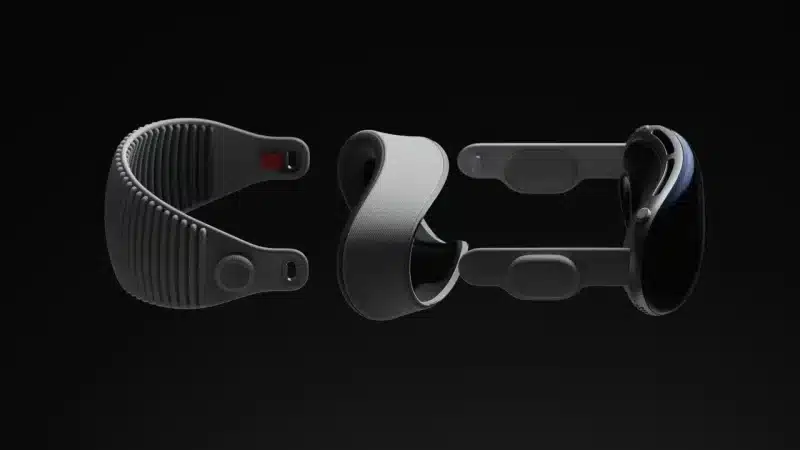
Apart from that, the frame also offers a magnetic attachment for ‘The Light Seal.’ This soft foam attachment helps eliminate excess light from entering your eyes when using the headset. Moreover, the soft foam-based design enables a comfortable viewing experience for extended usability.
If you wonder how one can wear the headset, it features flexible straps with Spatial audio-enabled audio pods on the sides. As the strap goes around the user’s head, the Apple Vision Pro offers a custom fabric-knitted headband that attaches to the sides with magnetic clips. Users may adjust the headband to ensure a perfect fit.
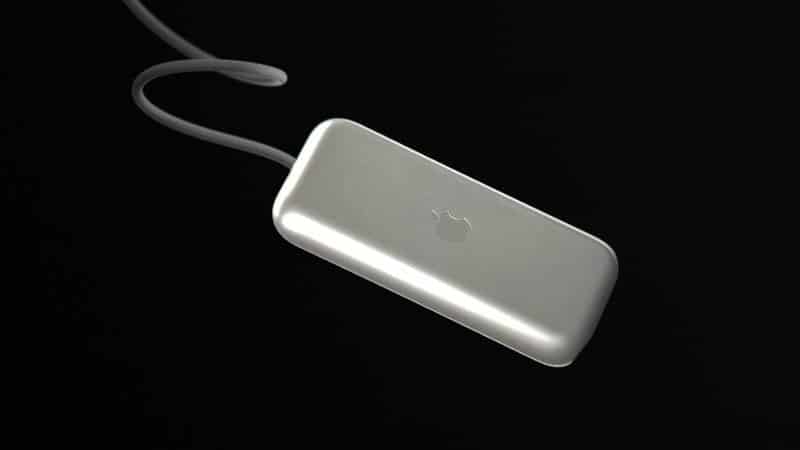
Interestingly, Apple has been able to keep the Vision Pro sleek – thanks to a smart battery arrangement. Instead of a built-in power supply, it comes with an external battery pack.
According to Apple, it will support all-day use when plugged in or up to two hours of use when untethered. The battery pack itself is encased in a compact aluminum body and connects to the headset via a woven cable.
Apple Vision Pro – Hardware specifications
The Apple Vision Pro features a pair of postage-sized micro-OLED displays for a total of 23 million pixels. That’s almost 40 percent more pixels than a 4K display for each of your eyes.
To magnify these panels and wrap them around your field of view, the headset has a custom three-element lens that offers incredible sharpness and clarity. Apple has teamed up with Zeiss for those who wear prescription glasses, so users can pair ZEISS Optical Inserts prescription lenses to use their Apple Vision Pro.
These inserts, which attach magnetically to the headset’s lenses, offer support for a huge range of vision correction without compromising the overall performance of Apple Vision Pro’s high-resolution display or eye-tracking capabilities.
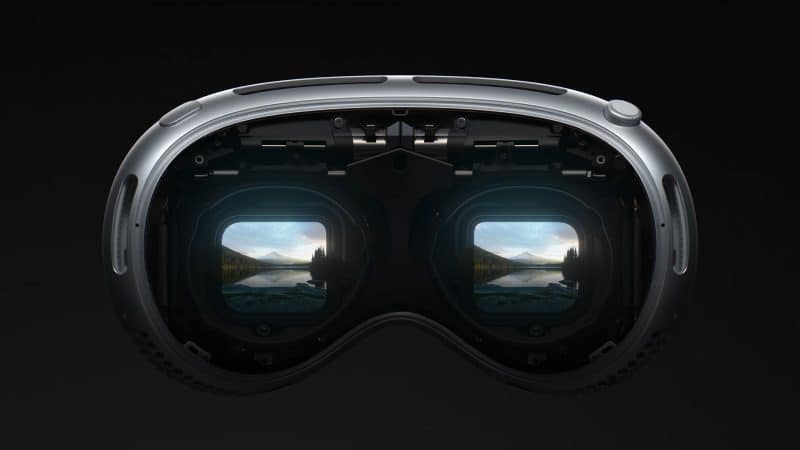
Cameras
As for the headset’s cameras and sensors, the Apple Vision Pro features an array of 12 cameras, 5 sensors, and 6 microphones on the exterior. This system provides high-resolution video to the displays, enables precise head/hand tracking, performs real-time 3D mapping, and more.
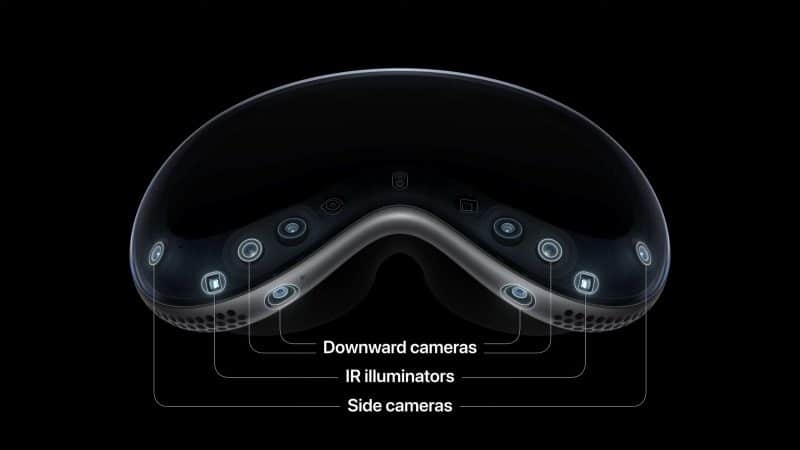
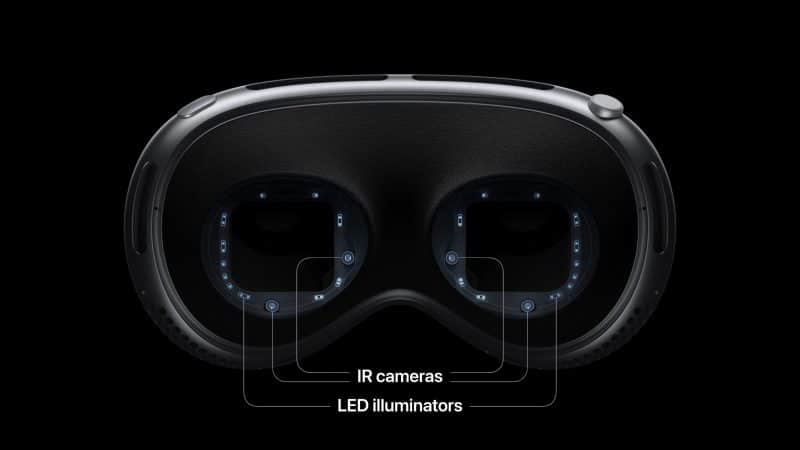
Apple has also equipped the Vision Pro with a high-precision eye-tracking system that offers a ring of LED illuminators and IR sensors. This system projects invisible light patterns onto the eyes to track their movement for responsive input without needing to use any kind of hardware controller.
Chipset
Apart from an array of cameras and sensors, the Vision Pro offers a dual-chip system that includes Apple’s M2 chip along with a new R1 chip.
The M2 delivers phenomenal compute performance, while the R1 chip is specifically designed to handle real-time sensor processing. The latter also ensures that the headset offers a great visual experience without inducing motion sickness.
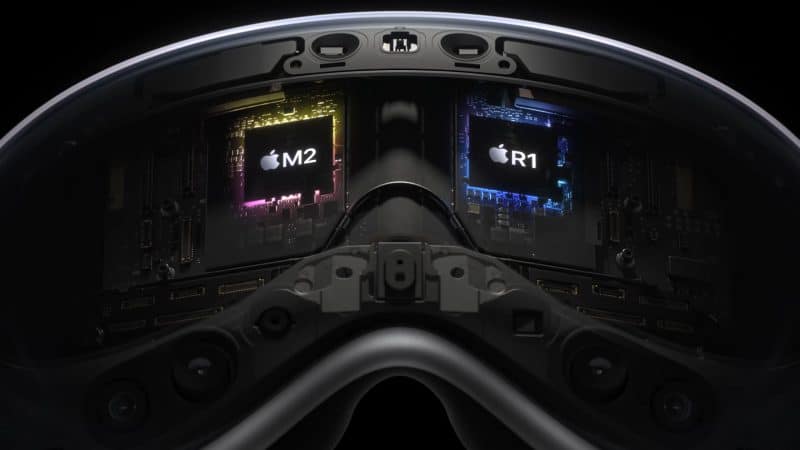
Additionally, these chips power a curved OLED panel found under Apple Vision Pro’s three-dimensional formed glass. This panel utilizes the headset’s EyeSight cameras to create and show a 3D projection of your eyes on the front. So others can interact with you even while you’re wearing Vision Pro.
Audio
Last but not least, the Apple Vision Pro also features an entirely new Spatial Audio system that delivers sound through dual-driver audio pods present on both sides. Apple states that these audio pods support new audio ray tracing tech, which matches the sound to your room’s acoustic properties.
Apple Vision Pro – Software and user interface
Vision Pro’s high-end hardware is accompanied by an entirely new spatial computing operating system dubbed visionOS. Similar to Apple’s other operating systems, visionOS features a dedicated Home View where you access all of your favorite Apple Vision Pro apps and useful utilities.
Moreover, once you open an app, you can easily resize it or place it anywhere you want it to be. Apple states that its new operating system constantly blends the digital with your physical space. It looks and feels like it’s present in your room with its 3D interface.
Besides, the UI elements in visionOS are designed in a way that they respond to light and even cast shadows. This makes everything you see feel realistic for an immersive user experience.
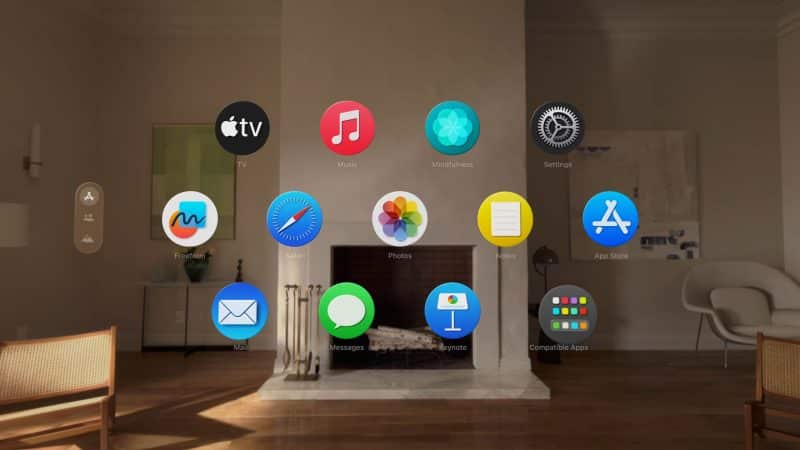
If you wonder how one can interact with the headset, visionOS features an entirely new input model that allows you to control everything with your eyes, hands, and voice. This is great as it entirely eliminates the need for any kind of controller or additional hardware.
You can simply tap your fingers together to select an object or gently flick them to scroll. Every hand gesture is designed to be as subtle as possible. So you don’t need to always keep your hands in midair.
visionOS also features Siri, allowing you to quickly open or close apps, play media, and much more. Further, you can simply look at any search field and start dictating to type.
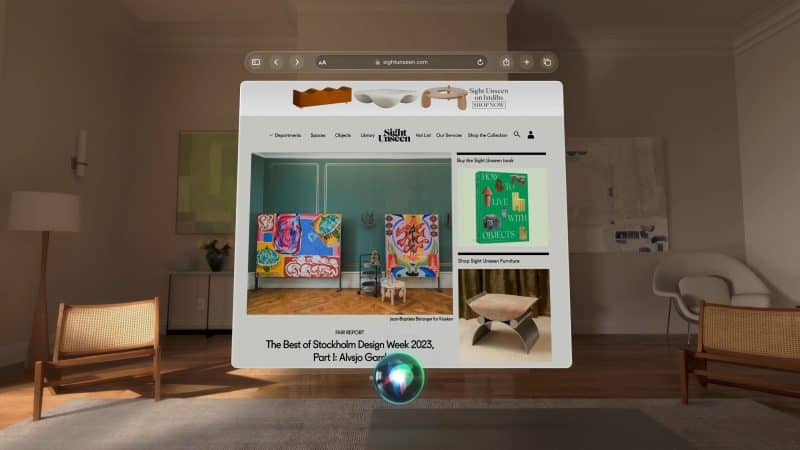
Last but not least, Apple has also equipped visionOS with a completely new biometric authentication system dubbed OpticID. This system uses Vision Pro’s LED illuminators and IR cameras to create a unique mapping of the iris to prevent unauthorized access to the headset and protect your privacy.
Apple Vision Pro features
Apple Vision Pro offers a seamless way to blend your digital and physical environment to enhance what you can do at home or at work. With apps like Notes, Messages, Keynote, Safari, FaceTime, and hundreds of other iOS apps available on the App Store in visionOS, you can do it all.
Here’s a quick rundown of all the other features offered by Apple Vision Pro:
Infinite App Canvas for multitasking
One of the best features offered by Vision Pro is the ability to multitask with Infinite App Canvas. With this feature, you can easily open and arrange multiple floating app windows around you in space. You can layer apps on top of each other or even place them above, below, or next to other apps.
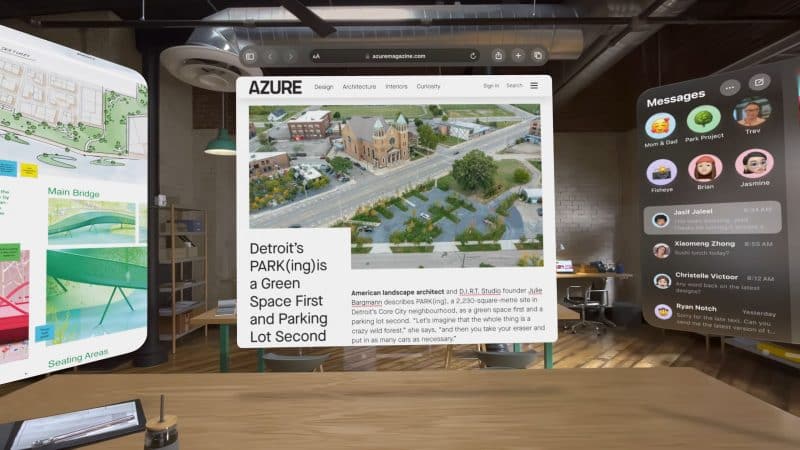
Infinite App Canvas even allows you to wirelessly project and expand your Mac’s display into Vision Pro just by looking at it. This is great for times when you might need a huge portable 4K display that can be accessed privately.
To make it easier for you to type and navigate through apps with Infinite App Canvas, you can use Vision Pro’s dictation or virtual keyboard feature. However, if you prefer physical input devices, Vision Pro also supports several Bluetooth accessories, like Magic Trackpad and Magic Keyboard.
3D FaceTime an video conferencing experience
Apple Vision Pro gives you powerful ways to connect with others thanks to its all-new spatial FaceTime Experience. Now, all participants appear in life-size video tiles that float around or above existing app windows for better multitasking.
Moreover, FaceTime on Vision Pro also supports Spatial Audio. If you wonder how you can join FaceTime calls without cameras in front of you, Apple Vision Pro has a feature dubbed Digital Personas to mitigate this.
Digital Personas use machine learning to create your digital likeness after a quick face scan with Vision Pro’s front sensors. What’s great is that these personas can even realistically mirror your eye and hand movement in FaceTime calls using cameras inside and outside the headset.
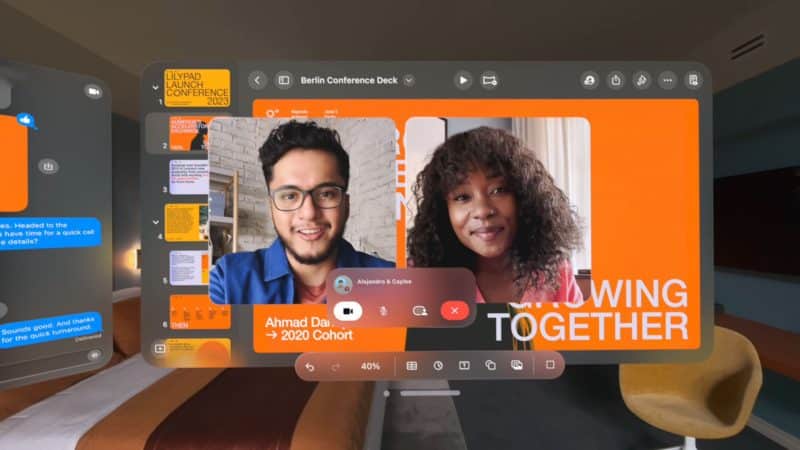
FaceTime on Vision Pro works seamlessly with other Apple devices so that everyone can join in. There’s also support for SharePlay so you can quickly share apps, collaborate on presentations, share photos and videos, or even watch movies together, just like if you’re physically present with them.
Engaging entertainment experiences
Besides acting as a tool that can help improve your productivity, Apple also wants its mixed reality headset to be equally useful for offering immersive and engaging entertainment experiences like watching movies or gaming.
If you love watching movies, Apple Vision Pro has a feature called Cinema Environment that lets you turn any room into your personal movie theater. In this mode, the headset automatically dims the lights around you to cast an ambient glow into the surroundings.
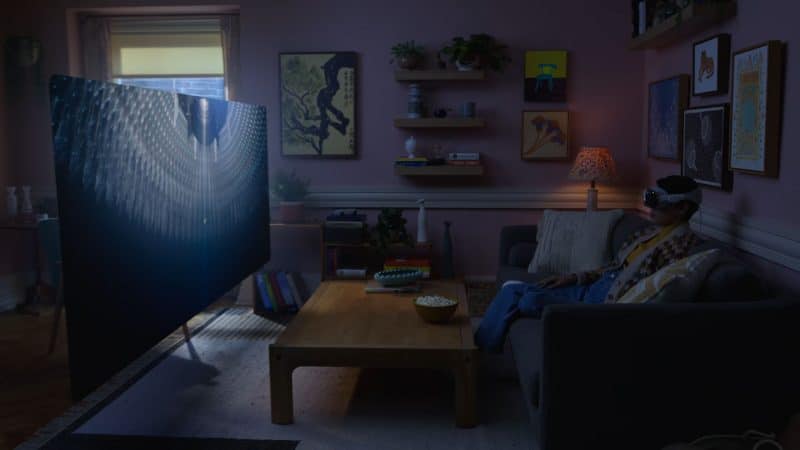
To take Cinematic Environments to the next level, you can easily scale your virtual screen up to a maximum width of 100 feet. Also, you may enjoy 3D movies like Avatar and immerse yourself in that world.
Additionally, you can also expand any content beyond the dimensions of a room with ‘Environments‘ that let you control how immersed you are by turning the Digital Crown. Apple states that your favorite movies, TV shows, and interactive HDR content from Apple TV+, Disney+, Max, and other services will be available on Vision Pro.
Furthermore, you will also be able to play more than 250 titles on Apple Arcade games on the headset using compatible controllers. This contains games such as Sonic Dream Team. New spatial games will also be accessible, such as Game Room, What the Golf?, and Super Fruit Ninja.
Spatial photos and videos
In addition to watching movies with Cinema Environment, Vision Pro also offers a way to capture spatial images or videos with just the press of a button. This feature uses the headset’s cameras and sensors to capture depth information so you can relive your memories in 3D with Spatial Audio.
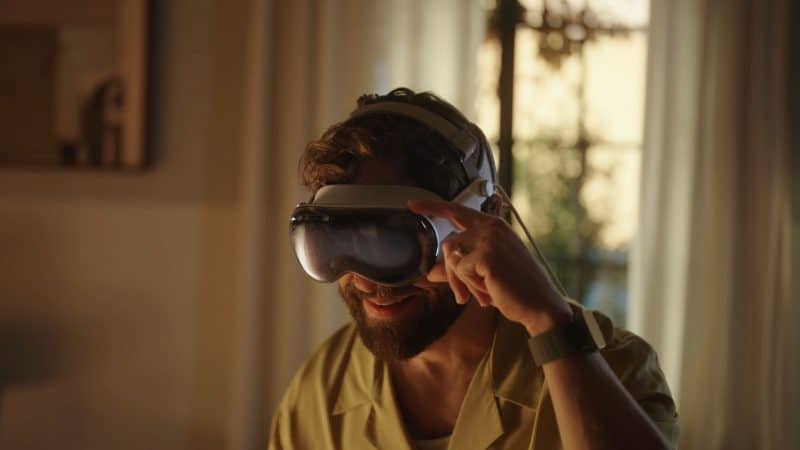
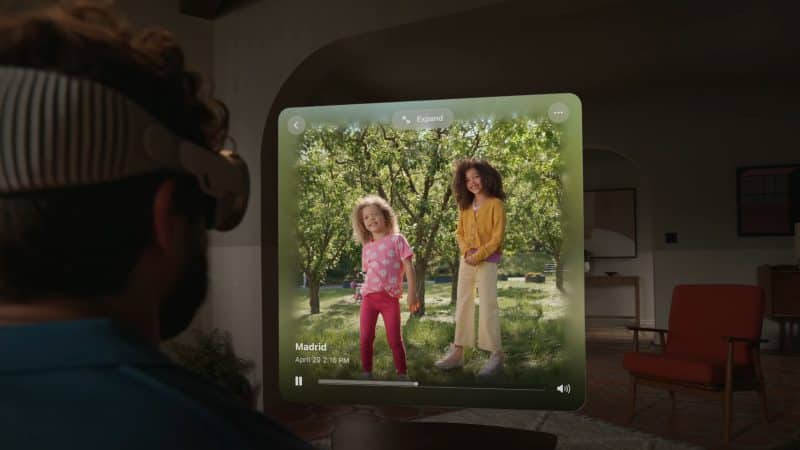
Apple Visio Pro also has something for those who would love to view photos or videos captured with their iPhones on a huge screen with the redesigned Photos app. Also, you may record spatial video on your iPhone 15 Pro to immerse yourself in your memories.
Vision Pro also includes Apple Immersive Video, which teleports you to 180-degree, three-dimensional 8K recordings produced with Spatial Audio. Moreover, Apple states that every panorama you’ve taken on your iPhone now expands and wraps around you for better immersion.
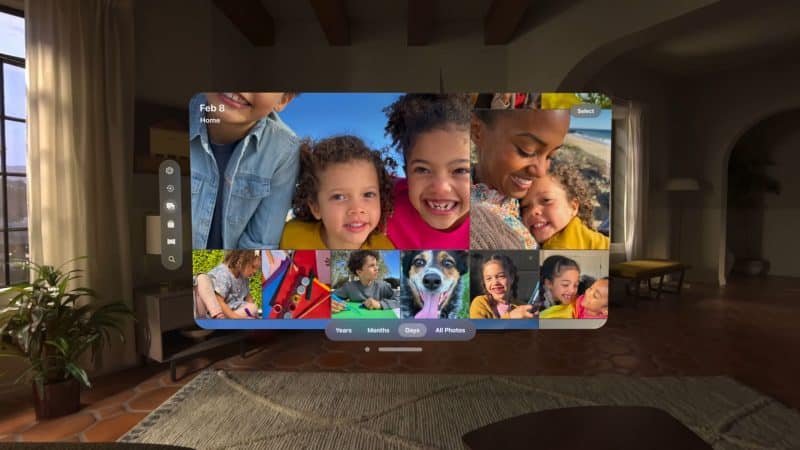
Apple Vision Pro – Price and release date
The Apple Vision Pro, with its remarkable spatial computing capabilities, will start at $3,499 with 256GB of storage in the U.S. This makes the Apple Vision Pro almost 9x costlier than the Meta Quest 2, the current most popular AR/VR headset available on the market.
Apple’s headset is available for pre-ordering from January 19, 2024 on Apple’s official website. Users can buy the Vision Pro from February 2, 2024 at any Apple Store across the United States, followed by more regions later next year.
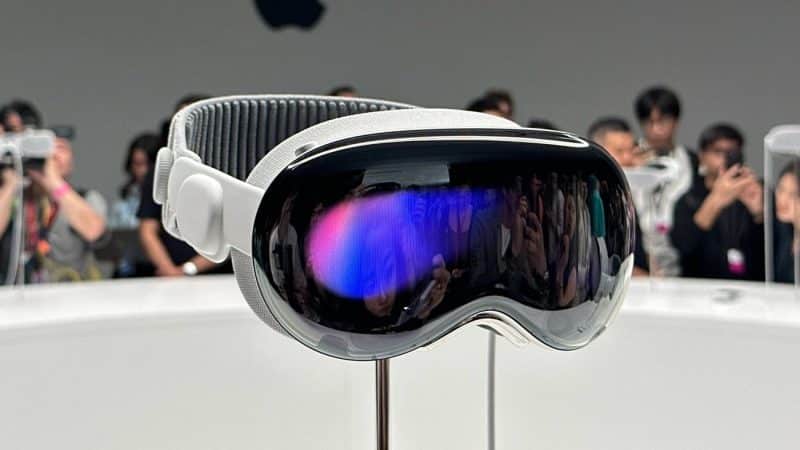
Moreover, if we were to go by the recent report by Mark Gurman, Apple has already shortlisted the UK and Canada to be the very first international markets where Vision Pro will be made available by the end of 2024, months after its initial release in the United States.
Meanwhile, customers in Asia and Europe will only be able to get their hands on the headset sometime towards the end or beyond 2024.
Video: Apple Vision Pro Explained: Features, Release Date, Price & More!
Witness the world through a new vision!
There you have it! The era of spatial computing is here, and Apple Vision Pro is its forerunner. So, whether you’re looking for a way to push your craft to the next level or eager to explore the endless possibilities of mixed reality, get ready to witness the world through a whole new vision.
Also read:

